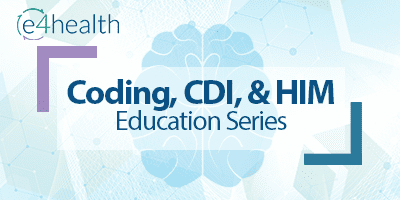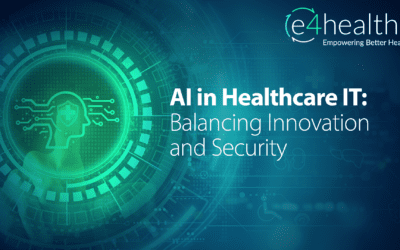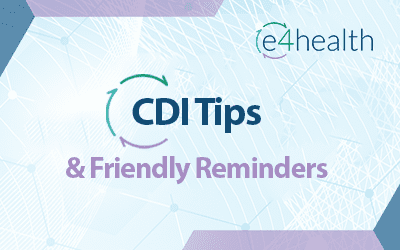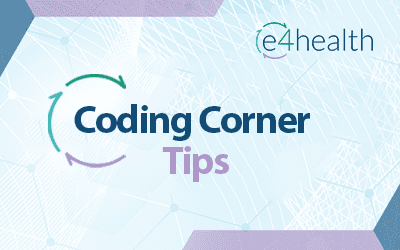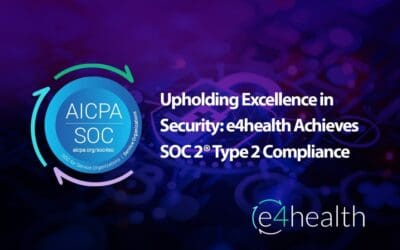Two new codes have been created at subcategory I26.0, Pulmonary embolism with acute cor pulmonale, to capture cement embolism of pulmonary artery with acute cor pulmonale (I26.03), and fat embolism of pulmonary artery with acute cor pulmonale (I26.04).Pulmonary cement...
e4health Industry News and Insights
e4health Team Spotlight – Kyle Drey
Apr 4, 2025 | News
Join us in celebrating Kyle Drey, our Senior Account Executive, and explore how his leadership is driving innovation at e4health.Can you walk us through your career path and how it led you to your current role at e4health? Throughout my career, I’ve worn many...
CDI Tip: Functional Quadriplegia
Mar 17, 2025 | CDI, Coding, Coding + CDI, Coding Tips, News
Explore the causes, symptoms, and treatment options for Acute Tubular Necrosis, a severe disability caused by a condition that does not involve the spinal cord.Describes a complete inability to move due to severe disability caused by a condition that does not involve...
Register for the e4health April CDI Leadership Roundtable
Mar 9, 2025 | CDI, Coding + CDI, Education & Training, News, Webinar
Acquire substantial knowledge on pertinent and current CDI industry subjects. We invite you to be part of our April CDI Leadership Roundtable with other CDI leaders. Taking place on April 23rd from noon to 1pm EST, the focus of our discussion will be Embracing AI in...
AI in Healthcare IT: Balancing Innovation and Security
Feb 24, 2025 | Article, Blog, Health IT, News
In an era where technology permeates every aspect of healthcare, the importance of robust regulatory oversight in healthcare IT cannot be overstated. A recent study by Cornell University’s ILR School, led by Rosemary Batt, has unveiled critical insights into the consequences of insufficient regulation in this vital sector.
The research paints a challenging picture of the healthcare IT landscape. Despite lofty promises of enhanced efficiency and cost reduction, many health IT systems have fallen short of expectations. This gap between promise and reality has led to widespread frustration and burnout among healthcare professionals, undermining the very improvements these systems were meant to deliver.
The integration of AI technologies into health IT systems further complicates this scenario. While AI holds immense potential for revolutionizing patient care, it also introduces new challenges, particularly in terms of data protection and ethical use.
Rich Amelio, SVP of Health IT at e4health, offers a nuanced perspective on this complex issue: “AI integration in healthcare IT presents both transformative potential and significant challenges. While cybersecurity threats remain a concern, AI technologies can substantially reduce operational costs and revolutionize patient care. Through predictive analytics and personalized medicine, AI empowers healthcare providers to anticipate and address patient needs more effectively, potentially improving outcomes. However, realizing these benefits requires a careful balance between innovation and robust governance to ensure data integrity and patient privacy.”
Nick Raup, SVP of AI and Automation Solutions at e4health, elaborates on the current state of AI adoption in healthcare: “We’re at a critical juncture in healthcare, balancing AI adoption with patient privacy protection. Recent cyber attacks have shattered the illusion of healthcare’s immunity to such threats. However, much like the financial industry’s consumer-focused tech advancements, healthcare stands to gain significantly from AI, particularly in administrative and financial workflows. While robust cybersecurity is non-negotiable, the real power lies in pairing healthcare experts with AI technologies. This synergy not only improves efficiency and reduces costs but also ensures AI models are trained by those with hands-on industry knowledge, leading to more accurate and relevant outcomes.”
The insights from these industry leaders underscore a critical point: while AI and advanced technologies offer tremendous potential for improving healthcare delivery, their implementation must be guided by robust regulatory frameworks and industry expertise. The challenge lies in striking a balance between fostering innovation and ensuring patient safety and data security.
In light of these challenges, healthcare organizations need partners who can help them navigate the complexities of health IT implementation and optimization. e4health, with over two decades of industry expertise, stands ready to support organizations in this journey. Our focus on empowering better health through data management, quality improvement, and revenue optimization positions us uniquely to help healthcare providers reduce waste, optimize projects, and maximize outcomes while gaining efficiencies in this rapidly evolving technological landscape.
As we move forward, it’s crucial for all stakeholders in the healthcare ecosystem to reflect on the importance of regulatory oversight in health IT. The potential benefits of advanced technologies in healthcare are immense, but realizing these benefits while mitigating risks requires a concerted effort from regulators, technology providers, and healthcare organizations alike.
Connect with e4health at HIMSS
Discover how e4health is leading the charge in healthcare innovation at HIMSS. Engage with our experts and explore groundbreaking solutions that enhance patient care and operational efficiency.e4health is thrilled to announce our participation in HIMSS, premier event...
CDI Tips & Friendly Reminders: HIV Disease/AIDS
Jan 16, 2025 | CDI, Coding + CDI, Coding Tips, Education & Training, News
Definition: HIV Disease is caused by human immunodeficiency virus, of all types, with destruction of CD4+ T-lymphocytes that help mediate the body’s immune response to infection. · The virus is bloodborne · It is most often transmitted through: o ...
Coding Corner Tips: Hypoglycemia
Dec 30, 2024 | Coding, Coding Tips, Education & Training, News
Hypoglycemia New Codes Effective with October 1, 2024 Discharges Category E16, Other disorders of pancreatic internal secretion has been expanded and codes have been created to capture the levels of hypoglycemia. Code Assignment: These new codes are intended to be...
Coding Corner Tips: Newly Prescribed Medicine
Dec 26, 2024 | Coding, Coding Tips, Education & Training, News
Newly Prescribed MedicineUsing "Long-Term Use" Code Code Assignment: It would be appropriate to assign a code from category Z79, Long-term (current) drug therapy, when a patient is prescribed a medication that is intended to be taken on a long-term basis to control a...
Coding Corner Tips: Prediabetes and Polyneuropathy
Dec 19, 2024 | Coding, Coding Tips, Education & Training, News
Prediabetes and PolyneuropathyPolyneuropathy due to prediabetes evidenced by abnormal gait, increased sensitivity to pain in left upper extremity and left lower extremity. What are the correct ICD-10-CM code assignments for polyneuropathy due to prediabetes? Per 3Q...
Upholding Excellence in Security: e4health Achieves SOC 2® Type 2 Compliance
Dec 18, 2024 | Article, Blog, News
We're proud to announce that e4health has achieved compliance with the SOC 2® Type 2 Framework, reflecting our ongoing commitment to data security and regulatory integrity. Max Lawson, Vice President and CIO at e4health, emphasizes the importance of this achievement:...
CDI Tips & Friendly Reminders: Myocardial Injury
Dec 16, 2024 | CDI, Coding + CDI, Coding Tips, Education & Training, News
Myocardial Injury and Acute Myocardial Infarctions Acute Myocardial Injury: Elevated cTN value above the 99th Percentile upper reference limit (URL). The injury is considered acute if there is a rise and /or fall of cTN values. Acute Non-Ischemic Myocardial Injury:...



